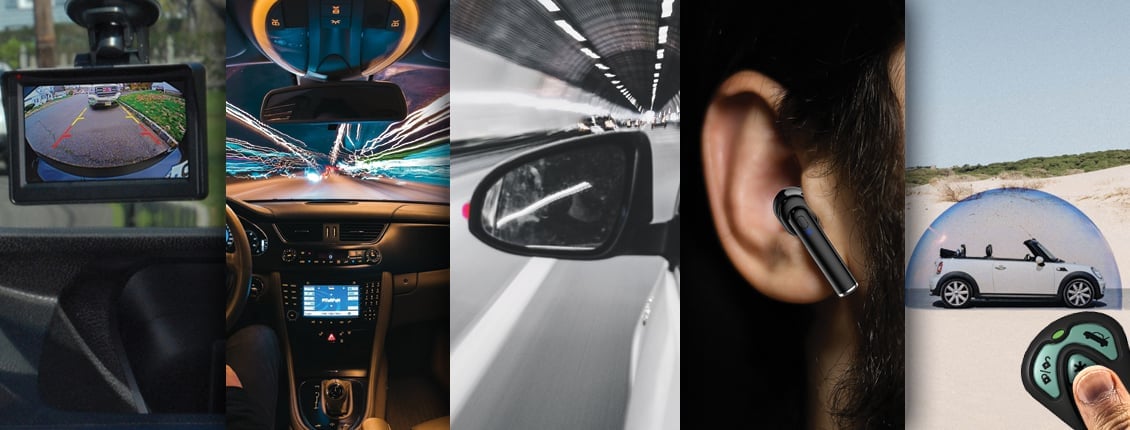
Why aftermarket safety is a win-win for you and your customers
Updated February 28, 2022
According to IHS Markit, the average age of a car on US highways is now 12.1 years—and climbing. Increasing by nearly 2 months during 2020 and elevated by the COVID-19 pandemic, the increase in average age will further drive vehicle maintenance opportunities from an increasingly aging vehicle fleet.
For the aftermarket industry, this is great news. Newer cars don’t need many repairs and are likely to find their way into dealerships to be fixed when they do have problems. Independent vehicle repair shops are also capitalizing on the wave of older vehicles needing repairs.
There are millions of aging vehicles that don’t incorporate many of the safety technologies available on new vehicles. And although some of the latest tech isn’t available yet for the aftermarket, it is trickling down. And there’s enough out there right now to turn virtually any older car into a safer car.
The Latest Stats
According to AutomotiveAftermarket.org, the entire automotive aftermarket in the US is a $380+ billion after-sales parts and accessories industry. It services approximately 280 million light, medium, and heavy-duty vehicles in operation (VIO) in the US.
• The US light-duty automotive aftermarket is a $324 billion industry (2021) with a compound annual growth rate of nearly 4% projected through 2024
• The entire US aftermarket, including light, medium and heavy-duty vehicles, is projected at nearly $420 billion in 2021 and is projected to reach $477 billion in 2024
• It includes 535,000 individual businesses consisting of independent manufacturers, repair shops, distributors, marketers and retailers. These businesses serve all 280+ million light, medium, and heavy-duty vehicles registered in the US today
According to Global Market, the increasing demand for automobiles from emerging countries is anticipated to increase the industry growth as well. Technology advancement and enhanced usage of eco-friendly techniques used in automotive production due to environmental regulations is likely to advance the demand for alternative automotive parts.
As for automotive electronics, the global market size was valued at USD 217.86 billion in 2020 and is expected to expand at a compound annual growth rate of 7.9% by 2028. Features like emergency call systems, accident data recorder systems, and safety systems like parking assistance and lane departure warning systems are driving the market growth.

Armed with this knowledge, stores can focus their resources on the trending areas while knowing sales will continue in softer areas like audio, security, and portable navigation devices. In addition, you need to be on the lookout for more advanced driver assistance systems coming on the market.
Most of these aftermarket updates require expert installation, providing custom installers and brick and mortar store techs with excellent revenue opportunities.
Top 5 automotive aftermarket products for a safer car
1. Rear View Cameras
Rear view safety is tops on every safer car wish list because many vehicles have poor visibility out the back. An aftermarket backup camera installed in a license plate, door handle, or via bracket can prevent accidents. The camera image can be fed to a replacement rearview mirror, monitor, or many in-dash head units and is displayed when a vehicle is put into reverse.
2. Lane Departure and Forward Collision Warnings
These systems give a driver enough time to react to potentially deadly situations involving other vehicles when traveling at highway speeds. Both kinds of warning systems often use well-equipped dash cams to monitor the road ahead. Lane Departure recognizes the painted lane markings or tire tracks. It bases its alerts on whether the equipped vehicle is veering outside the lines. A Collision Avoidance system alerts to slow or stopped vehicles in the lane ahead. Relied upon by truckers for years, this technology is finally trickling down to consumers.
3. Blind Spot Detection Systems
The blind spot is dreaded by drivers everywhere. Lane changes can lead to collisions because of vehicles hanging out where the driver can’t see. Detecting blind spots is accomplished by mounting sensors in places such as the front, rear, and sides of a vehicle. Buzzers and/or LED indicators show proximity. The range is generally 3 to 10 feet.
4. Replacement Head Unit Receivers
You can use your phone but it’s not necessarily safe. Navigation head units provide a much bigger, easier-to-read screen, better audio, and superior driving information than a smartphone map app. Then there’s Bluetooth. Bluetooth connectivity on today’s replacement head units is pretty much a given. Together, both navigation units and any unit’s Bluetooth pairing ability eliminate the distraction (and possible safety and legal consequences) of holding or handling a phone while driving.
5. Vehicle Security Systems
Security systems on new cars don’t get a lot of respect from experts. Even though this may be a soft area of sales on the aftermarket, it is not dead. Plus, many security systems are bundled with remote-start systems—some of which even provide ways to pre-cool or pre-heat a vehicle. A safer car should include updated security and remote start features.
A safer car saves lives plus creates more roads to revenue
Owners of older vehicles will certainly benefit from safety upgrades. But these five safety features may also appeal to new car buyers who turn down expensive OEM option packages. This significantly expands your potential customer pool.
Raise awareness of these aftermarket solutions by mounting an ad campaign in your store or on the radio. You can save some lives while helping your own bottom line.
And be sure to check out our Automotive and Marine product category on Petra.com for all your aftermarket automotive needs.
